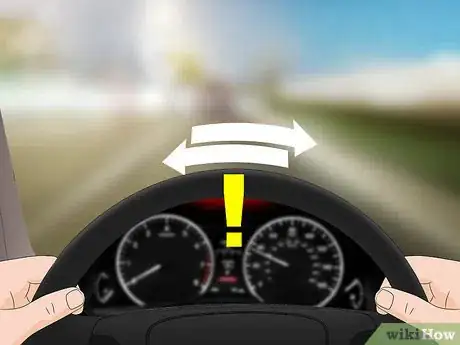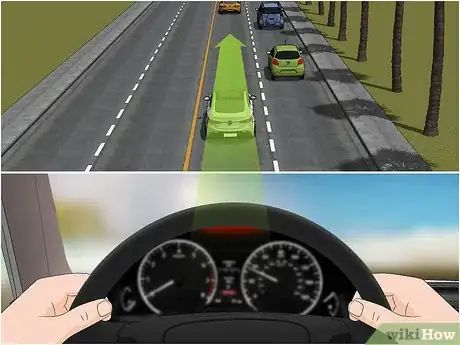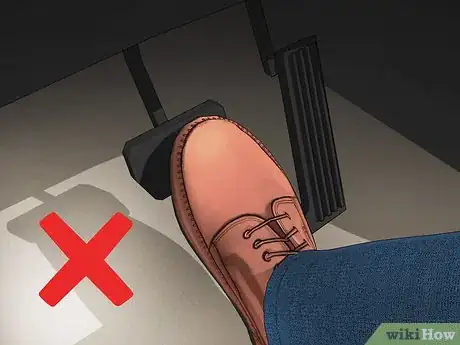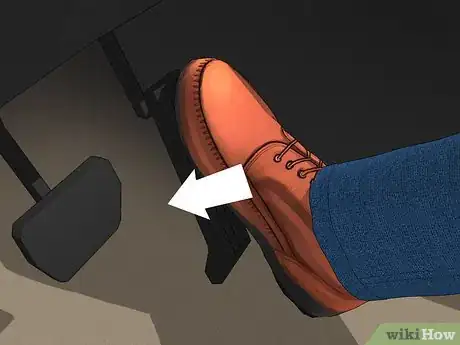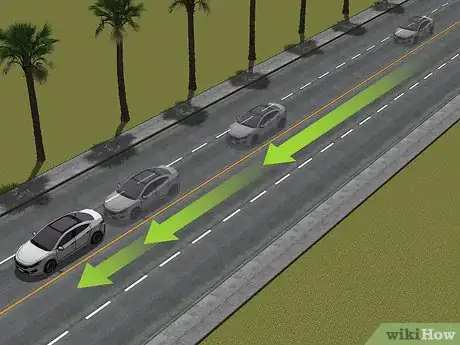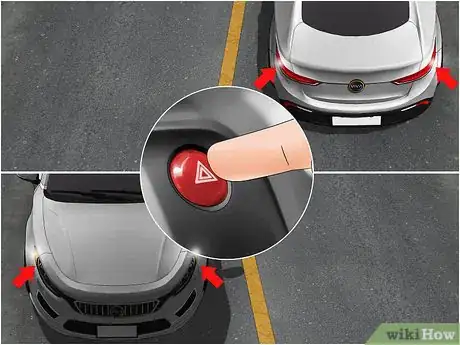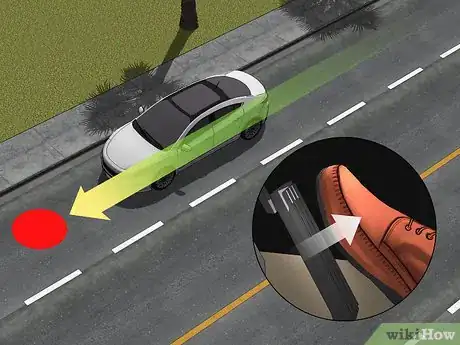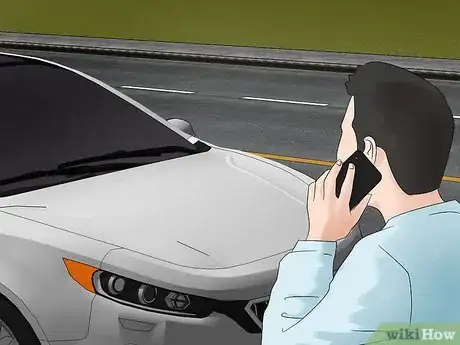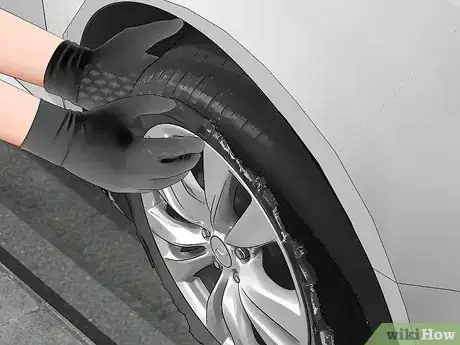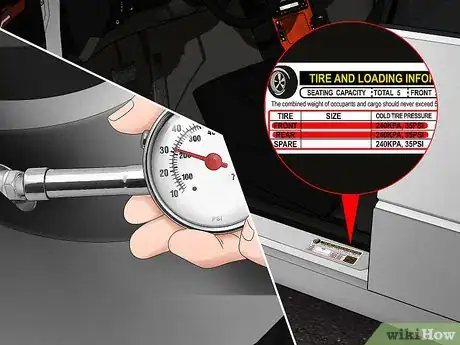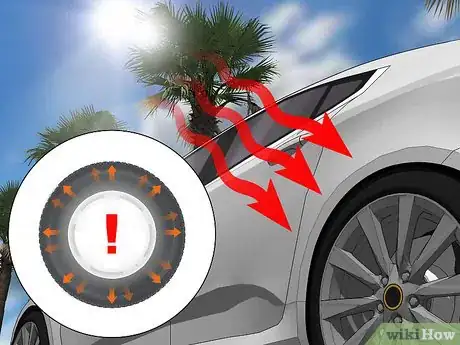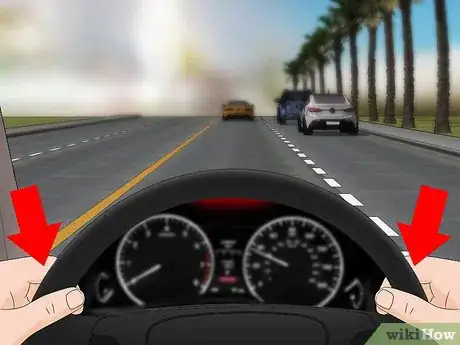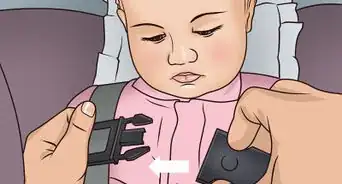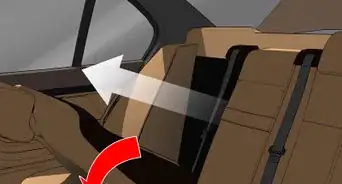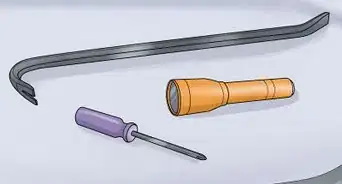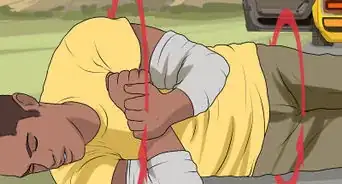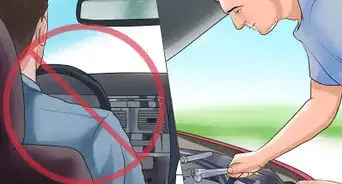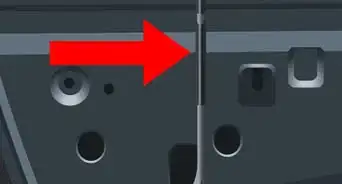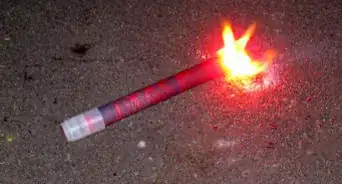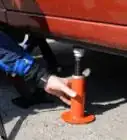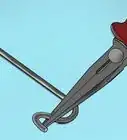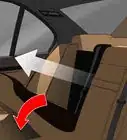This article was co-authored by Simon Miyerov. Simon Miyerov is the President and Driving Instructor for Drive Rite Academy, a driving academy based out of New York City. Simon has over 8 years of driving instruction experience. His mission is to ensure the safety of everyday drivers and continue to make New York a safer and efficient driving environment.
wikiHow marks an article as reader-approved once it receives enough positive feedback. In this case, 100% of readers who voted found the article helpful, earning it our reader-approved status.
This article has been viewed 63,550 times.
Having your tire blowout while driving can be one of the scariest moments on the road. While you should always try to prevent tire blowouts, it’s also helpful to know what to do in the moment. If you find yourself facing a tire blow out, remember to never jerk your steering wheel or slam on the brakes as this can lead to immense danger. Instead, keep calm, let your car naturally slow down, and get to a safe place!
Steps
Recognizing When Your Tire Has Blown Out
-
1Listen for telltale signs. There are three sounds associated with tire blowouts, and they happen in quick succession. First, you’ll hear a loud boom, shortly followed by a whooshing sound as the air rushes out of your tire. When the air has left, you’ll hear a flapping sound, which is the sound of your tire hitting the road.[1]
-
2Recognize changes in your steering wheel. After a tire blowout, your car will probably become difficult to steer. This can be indicative of a slower blowout, which might not have caused as much noise as a blowout explosion.Advertisement
-
3Notice if the car starts pulling in one direction. In the event of a blowout, your car will start pulling sharply towards the direction of the blown tire, regardless if the front or wheel tire blew out. This, more than any other sign, is an indication that your tire has blown out.[2]
Keeping Your Car on the Road
-
1Do not jerk the steering wheel. Keep your car driving in a straight line to minimize any potential swerving, fishtailing, or flipping. Avoid swerving into other traffic on the road. Maintain a firm grip on the steering wheel with your hands at the 10 and 2 position.
-
2Do not slam on the brakes. Your knee-jerk reaction will nearly always be to slam on the brakes, but this is the most dangerous thing in a tire blowout. Slamming on the brakes will cause your car to swerve and potentially fishtail out of control.
-
3Keep your foot pressing down on the gas. As counterintuitive as this might seem, increasing your speed will give you time to assess the situation and react properly. Because of your blown tire, pressing down on the gas won’t increase the speed of the car, but this action will prevent you from slamming on the brakes and potentially endangering yourself and the other passengers.[3]
-
4Let the tire drag slow your car. When your tire explodes, you car immediately starts dragging an immense amount of weight. This weight helps to slow down your car in a safe and straight manner better than any brakes.[4]
- Even with your foot on the gas, your car will slow down in time.
Getting to a Safe Place
-
1Indicate to other drivers that something is wrong. Use your emergency lights to notify the cars around you that something is wrong. They may have heard or seen the tire blowout, but if they haven’t, your emergency lights will alert them to the fact that you’re driving slower and need extra caution.[5]
-
2Move to the side of the road when your car has slowed down. Once the car has naturally slowed down to 30 mph (48 km/h) or slower, you may slowly turn the steering wheel to get to the side of the road.[6] Use your blinker to signal to the cars around you that you’re changing lanes.[7]
-
3Bring your car to a safe and controlled stop. Ease your foot off of the accelerator and let the drag of the blown out dire bring you to a complete stop. Once your car has stopped, ensure you’re safely on the side of the road before exiting the vehicle.[8]
-
4Call for roadside assistance. If you have car insurance that provides roadside assistance, call your insurance and request help. If not, call a friend or change the tire yourself. Do not drive attempt to drive until your blown out tire has been fixed.[9]
-
5Be careful when handling the blown out tire. Depending on how your tire blew out, there could be dangerous pieces of metal sticking out. Be very careful when handling any sort of blown out tire and, if possible, wear gloves to prevent injury.
Preventing Future Blowouts
-
1Check your tire pressure weekly. Fill your car tires to the appropriate tire pressure and maintain the correct tire pressure at all times. If your tires are over- or under-inflated, your car is at a much higher risk of having a tire blowout.[10]
-
2Check your tire pressure before long trips or during heat waves. Long trips where your tires may receive more wear and tear, or heat waves that change the air pressure in your tires are the two most dangerous situations for tire blowouts. Prevent tire blowouts by checking your tires daily during long trips and heat waves.[11]
-
3Maintain two hands on the wheel at all times. You will not be properly prepared to react to a tire blowout if you do not have two hands on the wheel. Avoid eating or drinking in your car, and maintain your focus on the road at all times.[12]
Expert Q&A
-
QuestionHow long can you drive on a blown out tire?
 Simon MiyerovSimon Miyerov is the President and Driving Instructor for Drive Rite Academy, a driving academy based out of New York City. Simon has over 8 years of driving instruction experience. His mission is to ensure the safety of everyday drivers and continue to make New York a safer and efficient driving environment.
Simon MiyerovSimon Miyerov is the President and Driving Instructor for Drive Rite Academy, a driving academy based out of New York City. Simon has over 8 years of driving instruction experience. His mission is to ensure the safety of everyday drivers and continue to make New York a safer and efficient driving environment.
Driving Instructor Not long, you should pull over to the side of the road as soon as you safely can.
Not long, you should pull over to the side of the road as soon as you safely can. -
QuestionHow can you keep a tire from exploding?
 Simon MiyerovSimon Miyerov is the President and Driving Instructor for Drive Rite Academy, a driving academy based out of New York City. Simon has over 8 years of driving instruction experience. His mission is to ensure the safety of everyday drivers and continue to make New York a safer and efficient driving environment.
Simon MiyerovSimon Miyerov is the President and Driving Instructor for Drive Rite Academy, a driving academy based out of New York City. Simon has over 8 years of driving instruction experience. His mission is to ensure the safety of everyday drivers and continue to make New York a safer and efficient driving environment.
Driving Instructor Things just happen sometimes, but the best thing you can do is check your tires regularly to make sure that the pressure and tread is safe for the road.
Things just happen sometimes, but the best thing you can do is check your tires regularly to make sure that the pressure and tread is safe for the road.
References
- ↑ https://www.travelers.com/resources/auto/safe-driving/how-to-handle-a-tire-blowout.aspx
- ↑ https://www.travelers.com/resources/auto/safe-driving/how-to-handle-a-tire-blowout.aspx
- ↑ https://www.edmunds.com/driving-tips/how-to-survive-the-top-10-driving-emergencies.html
- ↑ http://www.popularmechanics.com/cars/how-to/a9354/what-to-do-when-your-car-gets-a-blowout-15851782/
- ↑ https://www.travelers.com/resources/auto/safe-driving/how-to-handle-a-tire-blowout.aspx
- ↑ Simon Miyerov. Driving Instructor. Expert Interview. 4 December 2019.
- ↑ http://www.popularmechanics.com/cars/how-to/a9354/what-to-do-when-your-car-gets-a-blowout-15851782/
- ↑ Simon Miyerov. Driving Instructor. Expert Interview. 4 December 2019.
- ↑ https://www.travelers.com/resources/auto/safe-driving/how-to-handle-a-tire-blowout.aspx

